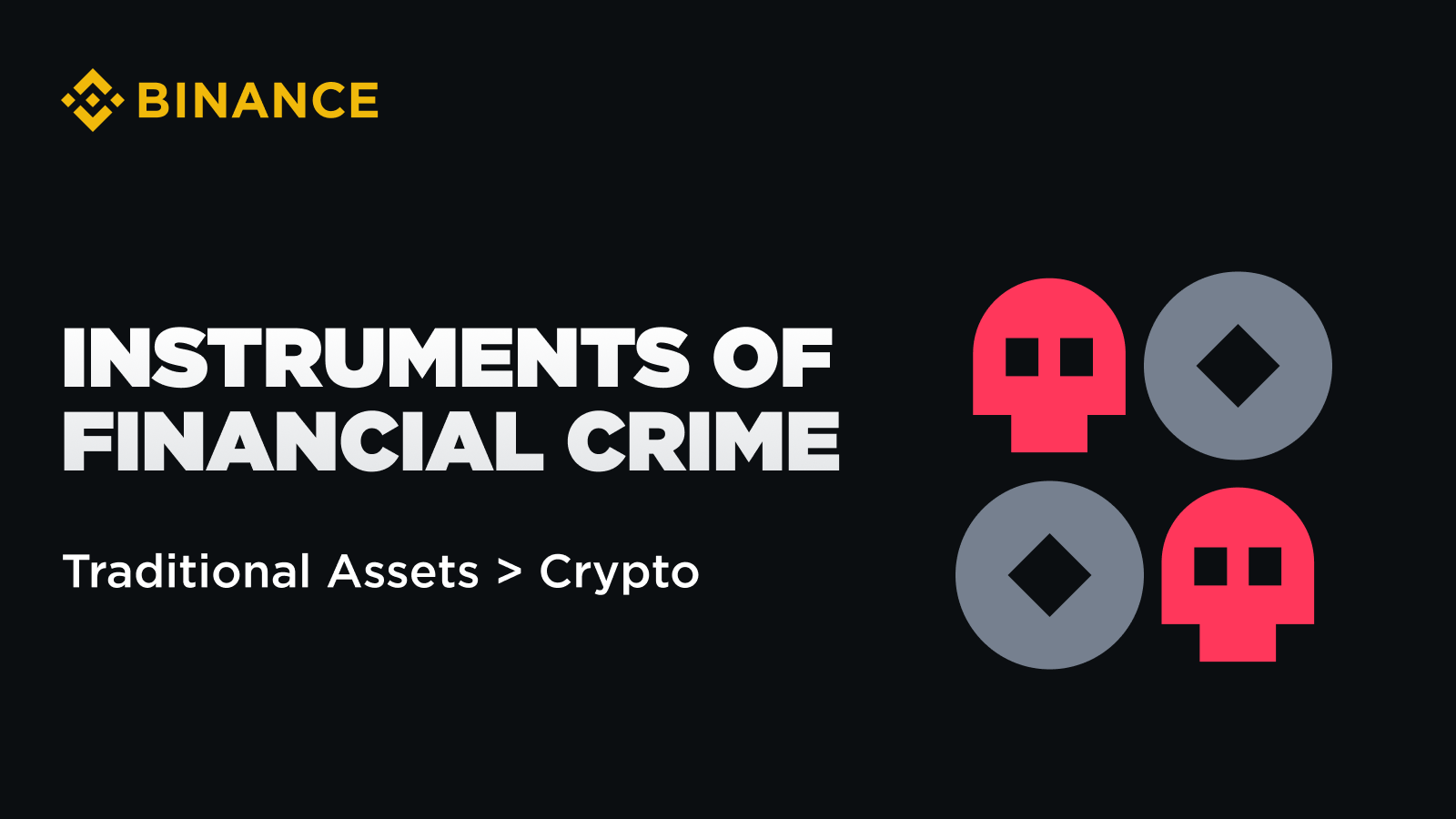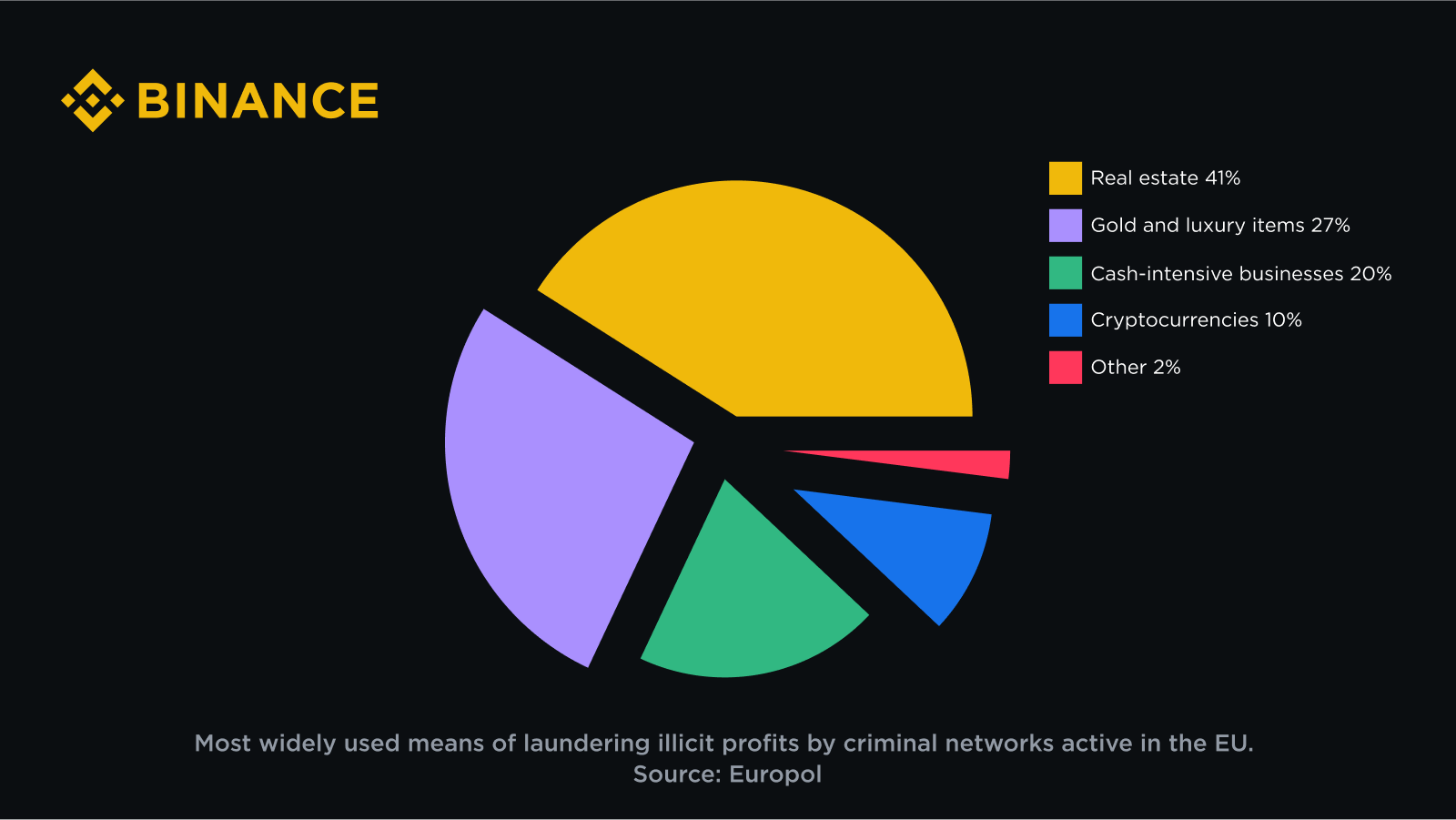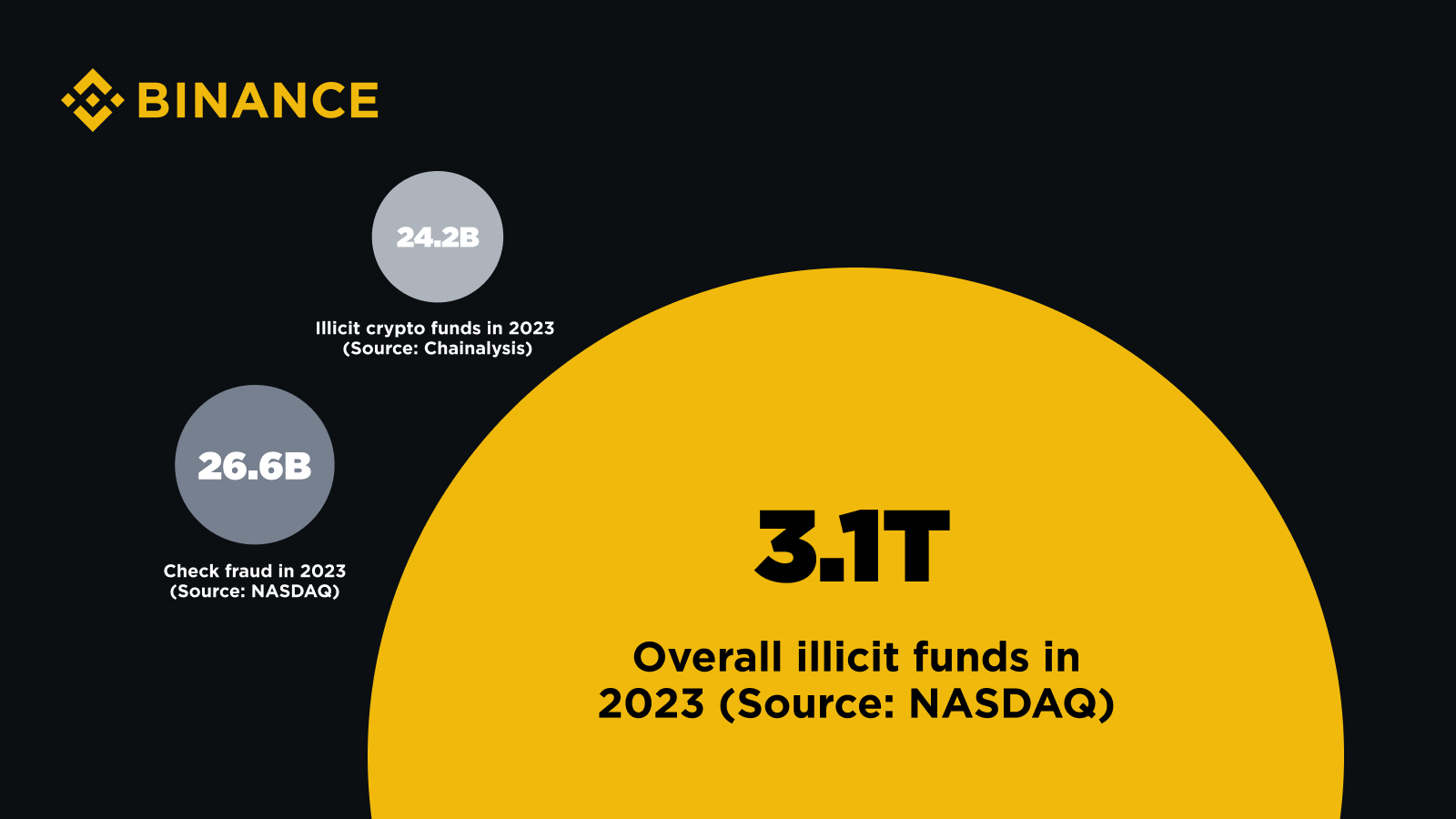Important notes
Despite the steady adoption of digital assets and the maturation of the industry, there are still views that argue that crypto is primarily a tool used for financial crimes, ignoring evidence of its minor and diminishing role in illicit transactions.
Europol's data; It shows that real estate, luxury goods and cash-intensive businesses are frequently used vehicles for money laundering by the EU's main criminal networks, and cryptocurrencies account for only a small percentage in this context.
Reports from NASDAQ and the US Treasury Department show a significant gap between illicit fund volumes in traditional sectors and the volume in the digital asset world. The world of digital assets accounts for a small portion of this total.
It's 2024, and Wall Street firms led by BlackRock, the world's largest asset manager, are racing to offer bitcoin exposure to mainstream investors through regulated exchange-traded products. Millions of people around the world use digital assets to preserve the value of their savings during high inflation and devaluation of national currencies, as well as to benefit from low-fee, almost instantaneous international money transfers. From philanthropy to the arts, traditional fields are being enhanced and reimagined with new efficiencies and possibilities offered by blockchain technology.
Yet strangely, there are still people who stubbornly refuse to acknowledge the advances the digital asset industry has made in recent years, instead taking refuge in tired concepts that have never been true or are hopelessly outdated. These people argue that crypto is nothing more than an online casino whose main use is to facilitate money laundering and various other crimes. This leads even the most radical of these skeptics to call for digital assets to be regulated or banned altogether.
However, the truth is that even independent data sources provide sufficient evidence to support the idea that crypto is far from being the first choice of bad actors when it comes to facilitating financial crimes. Let's look at some statistics that show that by far the most common tools of crime are assets and tools that no one would even propose to ban.
Europol: EU Criminal Networks Prefer Real Estate
The European Police Organization (Europol) is tasked with supporting EU Member States in combating serious international and organized crime and therefore deals with large-scale criminal and terrorist networks operating throughout the union. This agency's newly published report provides a comprehensive assessment of the activities of the most threatening criminal networks in Europe.
What these criminal organizations, specializing in activities such as drug trafficking, online fraud and property crime, have in common is the need to legalize illicit profits. Evaluating the prevalence of various tools used by criminal networks for this purpose, Europol experts determined that real estate is the most used tool in money laundering (41%), followed by luxury goods and cash-based businesses.
Although cryptocurrencies made the list with a 10% share of laundered funds, this is still far from what crypto detractors want you to believe. It would also be logical to expect the next edition of the Europol criminal networks report to show that the share of funds laundered through digital asset channels has fallen further if the year-on-year downward trends observed in most other crime areas continue.
So the next time you hear someone suggest banning crypto because it's a haven for money launderers, first respond with a suggestion to ban home sales, luxury wristwatches, and the neighborhood newsstand.
Less than 1% of Global Illicit Funds
Blockchain analysis firm Chainalysis predicts that the total value of digital assets deposited in illegal addresses will drop from $39.6 billion in 2022 to $24.2 billion in 2023. These figures include both assets stolen through crypto hacks and funds sent to wallets that Chainanalysis has identified as illegal, such as addresses belonging to ransomware groups, fraudulent operations, darknet markets, terrorism financing, and sanctioned institutions and jurisdictions, which is the largest category by volume. represents. This assessment is arguably the most rigorous and comprehensive assessment measuring the extent of criminal activity involving digital assets today.
$24 billion may seem like a huge amount, but how much is it in the context of all financial crimes? NASDAQ's latest Global Financial Crimes Report puts the total amount of illicit funds processed by the global financial system last year - including both crypto and fiat currencies - at $3.1 trillion.
While it's not fair to compare these two figures because they come from two different reports using different methods, they at least give us a pretty good idea of the relative scale of these two phenomena. 24.2 billion is less than 1% of 3.1 trillion. To be clear, the volume of illicit crypto funds according to Chainalysis accounts for exactly 0.78% of the total volume of global illicit funds according to NASDAQ.
Another point is that the NASDAQ report states that more than $485 billion of the total fund losses in 2023 occurred as a result of various frauds and frauds. One category that generates a similar amount of illicit funds as digital assets is bank check fraud. These scams caused individuals and businesses to lose $26.6 billion last year and occurred predominantly in the Americas, where checks are still widely used.
In other words, checks, an outdated technology that persists due to the remarkable inertia of banking practices, cause more financial crime than the entire innovative asset class that has been unfairly portrayed as a haven for criminals. Isn't it time to ban those bulky paper freaks yet?
Treasury Department: Crypto Is Far Behind Traditional Money Laundering Methods
Each year, the U.S. Treasury Department publishes National Risk Assessments on Money Laundering, Terrorist Financing, and Arms Trade Financing, detailing significant illicit finance vulnerabilities and risks threatening Americans. The 2024 Money Laundering Risk Assessment notes current and evolving trends in cryptocurrency-related risks, while stating that “the use of digital assets for money laundering remains well below more traditional methods that do not involve fiat money and digital assets.” clearly states that it continues.
The bulk of the report focuses on issues in traditional industries, such as abuse of legal entities, lack of transparency in some real estate transactions, lack of broad AML/CFT coverage for relevant industries such as investment advisors, professionals abusing their positions or businesses, and weaknesses in regulatory compliance and oversight in some regulated financial institutions. It focuses on persistent and emerging money laundering risks.
All of these areas represent familiar structural ills inherent in the traditional financial system and institutional practices, highlighting that financial crime is a systemic problem rather than something that can be attributed to a particular technological infrastructure or type of asset class.
Not a Problem but a Solution
When looking at the future of finance and considering which direction the industry is heading, it is necessary to constantly review and dispel outdated and completely inaccurate perceptions of digital assets. Far from being a major vehicle for financial crime, cryptocurrencies constitute a relatively insignificant portion of global illicit funds. Data shows that traditional methods and tools, such as real estate transactions and traditional banking practices, are much more commonly used channels for illegal activities such as money laundering.
Rather than scapegoating cryptocurrencies for systematic financial crimes, we should pay more attention to these traditional areas and the problems inherent within them. Despite lingering doubts, compelling data from a variety of independent sources underscore the significant developments in the crypto sector and how it is far from an ideal space for bad actors. A systemic problem requires systematic solutions, and digital assets should be seen as part of the solution, not a problem.


